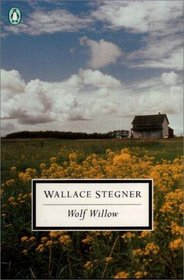Wallace Stegner is the Pulitzer-prize winning author of Angle of Repose, a novel I've been meaning to read for years. Wolf Willow is a hard book to categorize given that it is part memoir of Stegner's boyhood growing up on the remote frontier of the Cypress Hills and the town of Whitemud in southern Saskatchewan, part history of the region, and part fiction with a brilliant novella, Genesis taking up the middle portion of the book describing the harsh winter of 1906-1907 and the cowboys' tormented struggle to try to round up the cattle and calves stranded in the snow-covered plains of the region. Stegner relates his boyhood in the region and then struggles because at the time he really did not know any of the history of the area. He then goes on to describe the history from his adult perspective when this was written in the 1950s. He includes the history of the Native Americans including the plains Indians who fled to southern Canada after the Battle of the Little Big Horn. He also relates the history of the early trappers and traders from the Hudson Bay Company and the Métis, a group of peoples in Canada who trace their descent to First Nations peoples and European settlers. The Royal Canadian Mounted Police were also an early part of the history. Then Stegner uses his eloquent prose in the novella mentioned above, one of the high points of the book. At the end, he returns to the town to see how it has evolved and concludes that most of the inhabitants who bettered themselves in life ended up leaving for places with more opportunity including himself. Overall, an interesting portrait of life and hardship on the plains of Western Canada.
Book Reviews of Wolf Willow : A History, a Story, and a Memory of the Last Plains Frontier (Penguin Twentieth-Century Classics)
|
|
Wolf Willow A History a Story and a Memory of the Last Plains Frontier - Penguin Twentieth-Century Classics Author:
|
||||||




![header=[] body=[Get a free book credit right now by joining the club and listing 5 books you have and are willing to share with other members!] Help icon](/images/question.gif?v=90afaeb39)
